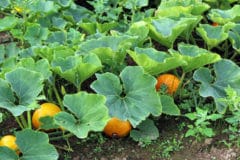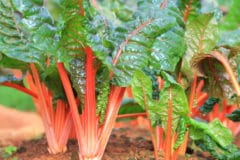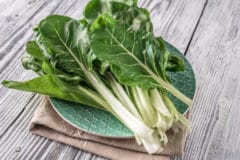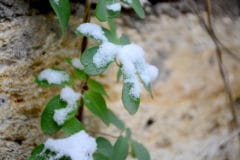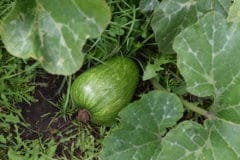Warm wintering grounds for Mangold unnecessary
Mangold is winter-hardy and usually survives double-digit minus temperatures. This means that it is not necessary to move to warm winter quarters. Warmly packed, even the Kübelmangold can remain outside. The mangold plants in the bed get a warm blanket.
That’s what you need:
- Mulch, brushwood or horn shavings
- Jute, fleece, old bags
Correctly covered, the chard sprouts quickly in spring
Once the chard has been harvested by late autumn, any leaves still standing above the ground are cut off hand wide. The plants get a blanket of brushwood, mulch or horn shavings. They serve as protection against prolonged frost and wetness.
From the end of February/ beginning of March, the chard is covered again depending on the frost conditions. Mulch and horn shavings have provided the soil with nutrients in the meantime. Now it sprouts again quickly and you can harvest it from the end of March to the beginning of May as an early garden vegetable.
When the chard begins to bloom, it becomes inedible. Now you can use it to extract semen or undermine it.
Protection for Kübelmangold
The roots of the chard must also be protected from prolonged frost in the bucket. Just like outdoors, the plant is cut down and covered with brushwood. In addition you wrap the bucket with jute, fleece or a bag.
Who hibernates better – leaf chard or chard steak?
Leaf chard is less sensitive to frost than chard. With a protected location and careful coverage, the Stielmangold also has good chances of overwintering. Especially in relatively frost-free locations, hibernation is worth a try. Especially since brushwood and mulch hardly cause any costs.
Tips & Tricks
You want to harvest Mangold over the winter? This is possible if the plants are covered with warming fleece.

